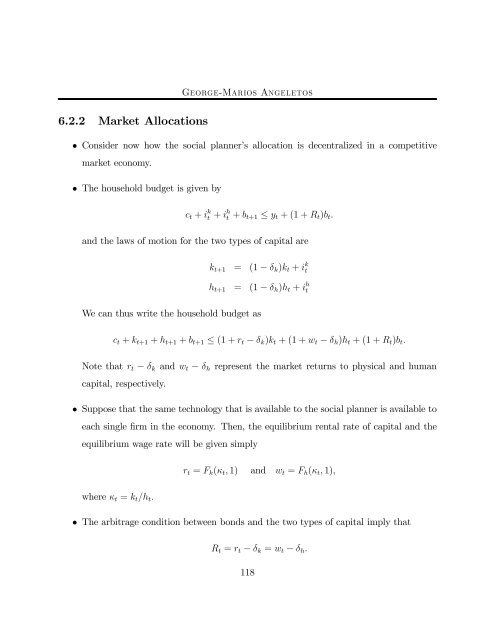14.451 Lecture Notes Economic Growth
14.451 Lecture Notes Economic Growth
14.451 Lecture Notes Economic Growth
You also want an ePaper? Increase the reach of your titles
YUMPU automatically turns print PDFs into web optimized ePapers that Google loves.
6.2.2 Market Allocations<br />
George-Marios Angeletos<br />
• Consider now how the social planner’s allocation is decentralized in a competitive<br />
market economy.<br />
• The household budget is given by<br />
ct + i k t + ih t + bt+1 ≤ yt +(1+Rt)bt.<br />
and the laws of motion for the two types of capital are<br />
kt+1 = (1− δk)kt + i k t<br />
ht+1 = (1− δh)ht + i h t<br />
We can thus write the household budget as<br />
ct + kt+1 + ht+1 + bt+1 ≤ (1 + rt − δk)kt +(1+wt − δh)ht +(1+Rt)bt.<br />
Note that rt − δk and wt − δh represent the market returns to physical and human<br />
capital, respectively.<br />
• Suppose that the same technology that is available to the social planner is available to<br />
each single firm in the economy. Then, the equilibrium rental rate of capital and the<br />
equilibrium wage rate will be given simply<br />
where κt = kt/ht.<br />
rt = Fk(κt, 1) and wt = Fh(κt, 1),<br />
• The arbitrage condition between bonds and the two types of capital imply that<br />
Rt = rt − δk = wt − δh.<br />
118

















